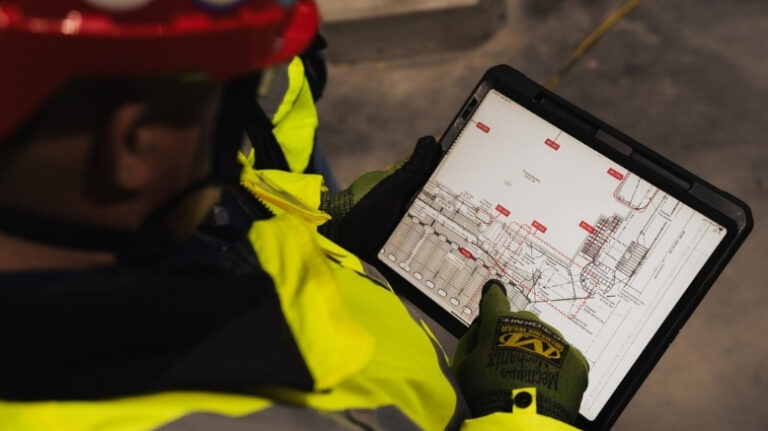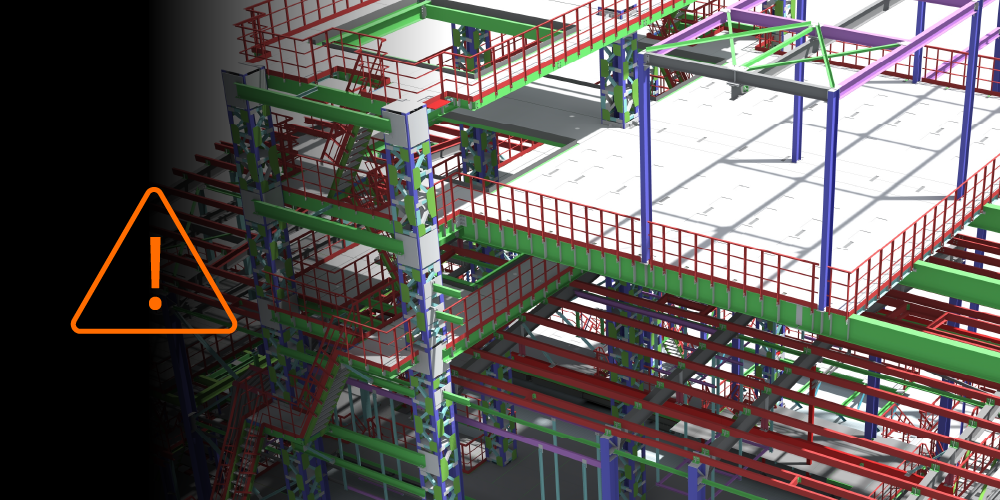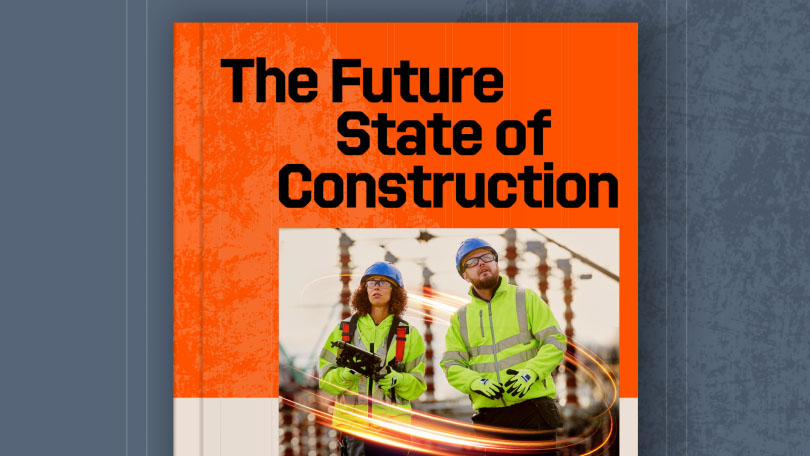Related Articles
— 6 min read
The Unsung Architects of Success: Elevating the Strategic Value of Document Control


Last Updated Aug 25, 2025

Andrew Janse
Senior Document Controller
Andrew is a highly experienced Document Controller at Hutchinson Builders, with more than 30 years in the construction industry. He plays a key role in ensuring projects operate with the most current and accurate documentation, from design drawings to shop drawings. Starting his career on the Australia Stadium project in Homebush, Andrew taught himself document control by working closely with design teams and even learning computers in the early 1990s. Since then, he has adapted seamlessly to every major industry shift, from carbon copy transmittals and ammonia printing to today’s digital platforms. Always keen to learn, Andrew embraces new technologies and is effective at adopting software systems that streamline project delivery. Known for his strong leadership and people skills, Andrew plays a key role in change management and teaching document control processes, emphasising attention to detail and the importance of following protocols to avoid delays. Respected by colleagues, subcontractors, and clients alike, he is often called upon to guide others on how best to utilise project systems.

Sean Doran
Enterprise Solution Specialist
Sean is a Solutions Engineer at Procore with a background in civil engineering and construction management, with over a decade of experience across project management, engineering, and functional consulting. He’s held various site based roles for Multiplex as well as Project Manager at TSA Management and has a deep understanding of cloud-based construction platforms, including Procore. With a passion for solving complex challenges and a commitment to continuous learning, Sean enjoys sharing practical insights to help construction professionals improve processes, embrace innovation, and stay ahead in a rapidly evolving industry.
Last Updated Aug 25, 2025

Behind every successful construction project lies a complexity of documentation—a trail of drawings, schedules, quotes, reports, certificates and timesheets stretching back to the earliest concept on a client’s drawing board.
To get from that preliminary scope to final handover takes more than coordination. It requires diligence, perseverance, and unwavering attention to detail—all of which are embodied in the role of the document controller.
It’s a role that often flies under the radar, yet every person on site relies on it. When document control falters, the results can be costly. As Procore’s Sean Doran recalls, “a subcontractor once built off old drawings on a building simply because they never received the latest set. That single gap in communication led to delays, finger-pointing, and expensive rework.”
Errors like that are often blamed on individuals, but the root cause usually runs deeper: fragmented systems, unclear processes, and inconsistent information flow. In an industry built on precision, document control isn’t just paperwork—it’s risk mitigation in action.
For Andrew Janse, the journey into document control began unexpectedly—as a rehabilitation role, following an accident nearly 30 years ago. Assigned to help on-site at Australia Stadium, he found himself learning computer skills from scratch, surrounded by ammonia machines and carbon copy transmittals.
Today, Janse is a Senior Document Controller at Hutchinson Builders, overseeing complex flows of information across multi-million-dollar builds. His career not only tracks the evolution of document control itself, but also highlights how vital the role has become to construction delivery.
Table of contents
The Core Function of Document Control
In a nutshell, document control ensures that all relevant information including drawings, specifications, schedules, project information, technical paperwork, supplier information, meeting minutes, warranties, inspection reports and certifications are received when they should be, distributed to the right parties, actioned appropriately and saved in the relevant archives or handover materials.
The most critical aspect of the document controller’s task is managing all the incoming documents for a project and then ensuring that everyone working on delivery has the most up-to-date and current documents.
For example, if a project engineer has made changes in their detailed drawings, the document controller needs to receive those drawings and then make sure all the relevant team members including the project manager and key trades, receive the updated drawings promptly.
Precision with Perspective
In a role where time, money and safety is riding on the accuracy of documentation, document controllers operate with both a bird’s-eye view and a microscope. They need to understand the project at a high level, what’s being built, when and by whom, while also tracking the finer details of file versions, approval workflows and who still owes a signature.
Everything kind of has to be in the right order from the start. That order includes reviewing every document that enters the system, routing it through the appropriate internal review and signoff process, distributing it to relevant subcontractors, and ensuring the latest versions are visibly available on site, often posted in the site shed. Revisions are stamped, signed and dated to create a clear, defensible trail.
Andrew Janse
Senior Document Controller
Hutchinson Builders
But maintaining order isn’t just about process, it’s about people. Document controllers often spend a significant portion of their time following up with engineers or trades for missing details, coaching stakeholders on unfamiliar systems, or navigating personality clashes between teams with different ways of working.
People may come from different organisations and have their own ways of doing things, and you have to say, well, this is how we are doing it here
Andrew Janse
Senior Document Controller
Hutchinson Builders
That quiet leadership, the ability to guide, persuade and align multiple parties toward a common workflow, is just as important as any system or tool. And when it works, the payoff is real: less rework, fewer delays, smoother handovers.
Time-Critical and Detail-Driven
Large-scale construction projects are dynamic by nature. Document controllers must stay close to what’s happening on site, often fielding new documents and technical changes after hours. When that happens, response time matters. Knowing exactly who needs what and acting quickly can prevent costly errors and keep delivery on track.
Every day is different. One minute you're chasing drawings, the next you're helping a subcontractor with a complex submission.
Andrew Janse
Senior Document Controller
Hutchinson Builders
By setting up workflows aligned with project milestones and delivery schedules, document controllers reduce friction, increase clarity, and make sure no one is left working from outdated information.
Risk Reduction Starts Early
While document controllers are essential during construction, their impact begins much earlier, at the tender stage. Having the most accurate and up-to-date documents during bidding allows teams to assess scope properly and price accurately. That benefits not just the head contractor, but also the subcontractors preparing estimates.
The major risk on a project is being over budget, dealing with variations, and ultimately facing litigation. Document control reduces that risk by giving everyone clarity upfront. Having that audit trail gives builders a stronger negotiating position. It reduces conflict and protects your margin.
Sean Doran
Enterprise Solution Specialist
Procore
As projects progress, that same clarity becomes a safety net. In disputes or claims, a well-managed document trail strengthens a builder’s position and provides the evidence needed to resolve issues quickly and fairly.
Coaching for Clarity and Consistency
Document controllers also play a quiet but powerful role in capability building—especially for new team members, subcontractors, or consultants unfamiliar with documentation protocols. Not everyone has dealt with project documentation, or they may be new to aspects of the process or the technologies involved, the document controller may find themselves acting as a coach.
You’re not just managing documents. You’re often showing people how to work with them—how to fill them out, where they go, what they’re for. That way, next time they don’t need help. You’ve taught them something.
Andrew Janse
Senior Document Controller
Hutchinson Builders
That coaching doesn’t just smooth the current project—it lifts the overall competency of everyone involved.
Quiet Power, Strategic Impact
In an industry where time is money, and clarity is the difference between progress and chaos, document controllers are the quiet power behind successful delivery. They don’t pour concrete or weld steel—but their fingerprints are on every milestone, every resolved RFI, every smooth handover.
Andrew Janse’s three-decade career shows that document control isn’t just about systems and files, it’s about people, process, precision, and pride. It’s about building trust through consistency, catching the details others miss, and helping everyone do their job better by getting the right information at the right time.
You can’t deliver quality work without quality information.

Andrew Janse
Senior Document Controller
Hutchinson Builders
As construction projects grow in scale and complexity, the role of the document controller is no longer optional overhead—it’s essential infrastructure. It’s time we recognised document controllers not as back-office administrators, but as strategic partners in project success. The sooner we do, the stronger our projects, and our industry, will be.
Categories:
Written by

Andrew Janse
Senior Document Controller | Hutchinson Builders
Andrew is a highly experienced Document Controller at Hutchinson Builders, with more than 30 years in the construction industry. He plays a key role in ensuring projects operate with the most current and accurate documentation, from design drawings to shop drawings. Starting his career on the Australia Stadium project in Homebush, Andrew taught himself document control by working closely with design teams and even learning computers in the early 1990s. Since then, he has adapted seamlessly to every major industry shift, from carbon copy transmittals and ammonia printing to today’s digital platforms. Always keen to learn, Andrew embraces new technologies and is effective at adopting software systems that streamline project delivery. Known for his strong leadership and people skills, Andrew plays a key role in change management and teaching document control processes, emphasising attention to detail and the importance of following protocols to avoid delays. Respected by colleagues, subcontractors, and clients alike, he is often called upon to guide others on how best to utilise project systems.
View profile
Sean Doran
Enterprise Solution Specialist | Procore
Sean is a Solutions Engineer at Procore with a background in civil engineering and construction management, with over a decade of experience across project management, engineering, and functional consulting. He’s held various site based roles for Multiplex as well as Project Manager at TSA Management and has a deep understanding of cloud-based construction platforms, including Procore. With a passion for solving complex challenges and a commitment to continuous learning, Sean enjoys sharing practical insights to help construction professionals improve processes, embrace innovation, and stay ahead in a rapidly evolving industry.
View profileExplore more helpful resources

Managing Direct Costs in Construction: How Visibility Drives Profitability
Direct costs define the financial reality of every construction project. They cover the labour, materials, and equipment that drive delivery and determine profitability. But even the best-planned budgets can shift...

BIM Clash Detection: Reducing Rework, Delays, and Risk in Construction
Design clashes can be a significant hidden cost in construction, as each conflict between systems risks expensive rework, project delays, and reduced margins. BIM clash detection empowers teams to identify...

Next-Gen Job-Costing: Ready to Move? 5 Things to Consider Before You Get Started
In this three-part series, Quantity Surveyor turned Financial Solutions Specialist Clint Burgess uncovers the real-world gains for people, processes, and profits when businesses move from legacy to next-generation Enterprise Resource...

From Workarounds to Workflow: Solving Construction’s Legacy Job-Costing System Challenges with Next-Gen Tools
In this three-part series, Quantity Surveyor turned Financial Solutions Specialist Clint Burgess uncovers the real-world gains for people, processes, and profits when businesses move from legacy to next-generation Enterprise Resource...
